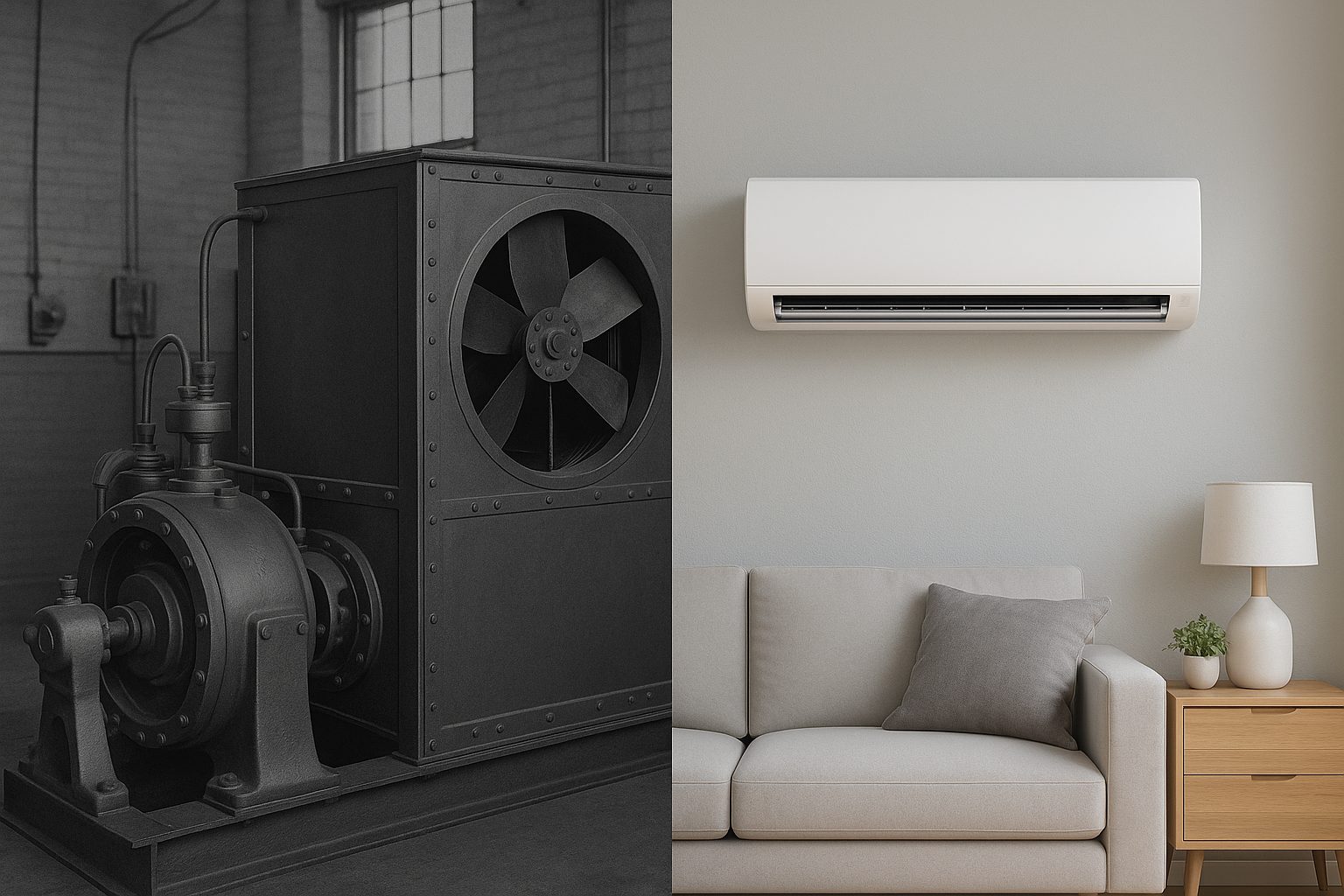
Introduction
Air conditioners have come a long way since their invention in the early 1900s. What began as a large, mechanical device for industrial cooling is now a sleek, energy-efficient home essential. Let’s take a journey through the decades to see how cooling technology evolved — and why modern inverter systems are a game-changer for comfort and savings.
1902 – The Birth of Air ConditioningIn 1902, Willis Carrier invented the first electrical air conditioning system in Buffalo, New York. Initially designed to control humidity in a printing plant, it laid the foundation for climate control as we know it. These early units were massive, expensive, and limited to factories, theaters, and department stores.
1930s–1950s – Cooling Comes HomeBy the 1930s, smaller, more affordable models appeared for home use. Window AC units became popular in the 1950s, transforming summer comfort for millions of households. However, these early models were energy-hungry and far from efficient by today’s standards.
1970s–1990s – Energy Awareness & Better EfficiencyThe energy crisis of the 1970s pushed manufacturers to create more efficient cooling systems. Split AC units emerged, separating the noisy compressor from the indoor space for quieter operation. R-22 refrigerant was standard during this period — but it would later be phased out for environmental reasons.
2000s – Digital Controls & Eco-Friendly RefrigerantsThe early 2000s saw the adoption of eco-friendly refrigerants like R-410A and the rise of digital thermostats. Units became sleeker, quieter, and more user-friendly, while programmable settings allowed homeowners to save on energy bills.
Today – Smart Inverter TechnologyModern air conditioners use inverter technology, which adjusts the compressor speed instead of cycling it on and off. This results in:Lower energy consumption (up to 40% savings)Consistent temperature controlLonger equipment lifespanQuieter operationSmart features now let homeowners control their cooling from a smartphone, integrate with voice assistants, and track energy usage in real time.
Why Upgrade to an Inverter AC?
If your AC is over 10 years old, upgrading to an inverter system can mean:Immediate savings on energy billsImproved indoor comfortBetter air quality with advanced filtrationEligibility for rebates and tax incentives
Conclusion
From Carrier’s first invention in 1902 to today’s AI-powered inverter systems, air conditioning technology has continuously evolved to make our lives cooler, greener, and more comfortable. The next leap? Even smarter, more efficient systems that anticipate your comfort needs before you feel them.
